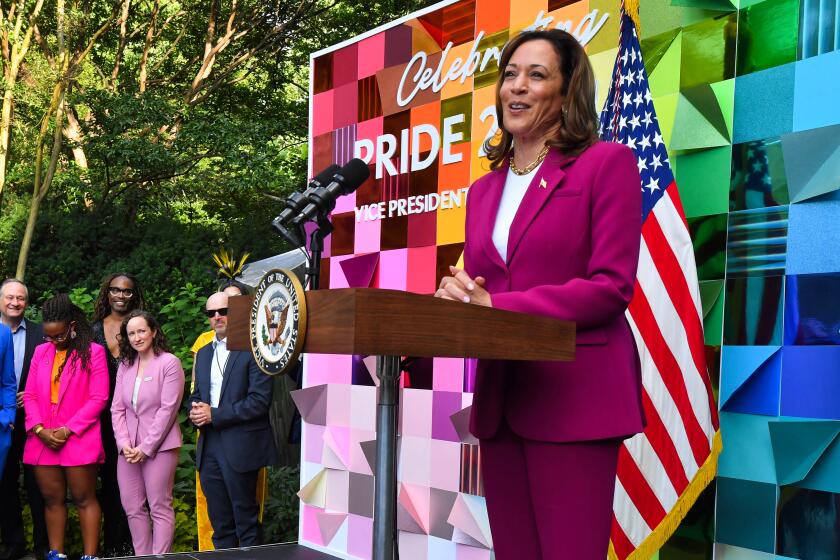Separated at the border, parents and children must deal with a web of agencies
In a rare retreat last week, President Trump signed an executive order to end the controversial practice of separating children from parents illegally crossing into the United States. By then, though, more than 2,000 migrant children were in the hands of the federal government, which in May began enforcing the administration’s “zero tolerance” policy requiring federal officers to hold all adults who cross the border illegally and charge them with misdemeanors.
A confusing web of agencies has been responsible for processing, splitting up and detaining families. Here is the breakdown.
U.S. Customs and Border Protection
Families that cross the border illegally or turn themselves in at ports of entry in hope of gaining asylum typically first encounter the U.S. Customs and Border Protection, the largest law enforcement agency in the U.S. with nearly 20,000 agents. Border patrol officers process each person individually, taking their names, fingerprints and other personal information. Both parents and children have their mug shots taken and are assigned identification numbers.
Confusion has reigned over how the government has kept track of families or whether it could ensure parents and children could ultimately be reunited. On Monday, border patrol officers said families are now being issued an additional grouping number so they can be traced. But it is unclear when this procedure began.
U.S. Marshals Service
Under the Trump administration’s “zero tolerance” policy, adults who cross into the U.S. illegally — in between ports of entry along the nearly 2,000-mile border — are transferred to the custody of the U.S. Marshals under the U.S. Department of Justice. They are then bused to federal courts along the border where they are prosecuted.
Immigration and civil rights lawyers say the process is swift: Migrant detainees often plead guilty before judges in large groups, with no access to counsel. Depending on their criminal histories, some are given prison terms and moved to the U.S. Bureau of Prisons.
Until the executive order, lawyers said, the enforcement of the zero tolerance policy included parents, which led officers to split families apart, often without warning parents that they might not see their children again. Border patrol officials officially shifted course on Monday, saying they would stop handing parents over to the justice department.
Immigration and Customs Enforcement
Once prosecuted, adults are sent to U.S. Immigration and Customs Enforcement, one of several agencies under the umbrella of the Department of Homeland Security.
The agency oversees or contracts with more than 200 detention centers, jails and prisons across the country. Parents can be detained anywhere in the country, often far away from they where they were separated from their children on the southern border.
The agency also has three family detention centers that can house 3,326 immigrants, according to an April report by the Government Accountability Office. As of last week, those facilities housed 2,623 people, according to a spokeswoman for Immigration and Customs Enforcement.
U.S. Health and Human Services
Under the family separations policy, children held at the border were handed over to the Department of Health and Human Services, where they became part of more than 11,000 “unaccompanied minors” held under a program managed by the Office of Refugee Resettlement. Many are teenagers who crossed the border without their parents.
For its first nine years, the program served fewer than 8,000 children yearly, but the numbers began to jump in 2012, as large numbers of people began fleeing the rising violence and staggering poverty in El Salvador, Guatemala and Honduras. Under the unaccompanied minors program, children are placed with sponsors, including relatives or others in the country willing to take them in, or housed in one of more than 100 shelters in 17 states across the country.
Amid the separations, the department opened a tent city to hold 360 teens in Tornillo, a rural border town southeast of El Paso. Over the weekend, Department of Homeland Security and U.S. Health and Human Services said there is a central database the agencies can update when the location of a parent or child changes. But it hasn’t released any details on how that system works.
U.S. Department of Defense
Trump’s executive order ending family separations directed federal officials to keep families together after they’ve been detained, but that’s likely to face legal challenges as multiple courts have found children cannot be held in family detention centers indefinitely. Meanwhile, administration officials have struggled to find enough facilities and beds for those who’ve been detained.
Pentagon officials this week confirmed that the military has been directed to build tent camps at two bases in Texas to temporarily house migrants. The camps will be built at Ft. Bliss, an Army base in El Paso near the southern border, and at Goodfellow Air Force Base, which is near San Angelo in central Texas.
The facility at Ft. Bliss will be designed to hold families with adults, while Goodfellow would hold children who arrive at the U.S. border without a parent.
More to Read
Get the L.A. Times Politics newsletter
Deeply reported insights into legislation, politics and policy from Sacramento, Washington and beyond. In your inbox three times per week.
You may occasionally receive promotional content from the Los Angeles Times.











